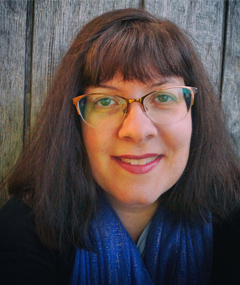As I write this blog, my little town is in the midst of a Nor’easter snowstorm. According to the forecast, there’ll be at least 15 to 20 inches (!) of accumulated precipitation by 7 am tomorrow. At the moment, there are about 2.5 inches, transforming driveways, yards, and roadways into a beautiful blank canvas that’ll shortly be filled with boot-prints, patched-together snowmen with crooked carrot noses, and tire tread aplenty.
The slippery, fluffy flakes pounce and pirouette outside the office window. The undulating, unfolding landscape is a compelling show that I keep gazing into every few sentences—okay, sometimes every few words.
Snow has one magical quality that I equate with journaling: self-discovery. With snowstorms— whether a powdery, dry, and compact snow that meanders and teases or a fleet, slushy, dewy snow that wastes no time, whether driven sideways by a blustery wind or glops of coldness with nary a gust in sight, or a snow as fine and fierce and vertical as a steadily driving rain— each particle contributes to the whole weather event in a magnificent and meaningful way.
You can’t make a drift out of a solitary flake; you can’t make a writer out of one element. All of our many life experiences swirl together and coalesce in intricate and diverse patterns to form an amazing well of symbols, images, and themes to draw from for our writing.
That’s where journaling comes in: we can use our journals or our writing notebooks and morning pages to facilitate our current and future artistic projects. There’s expansiveness and openness, a safe space to emote and explore, within a blank page, a free hour, an unfilled page or canvas that we can ease into with all of our usually held-in thoughts and perceptions.
Many ideas that we keep lodged, tucked carefully out of sight and judgment in the belly or in the deepest subconscious, begin to ooze into our free-writing within the first few paragraphs.
Images the logical mind hasn’t called to light begin to align in handwritten curves from a felt-tipped pen or typed prose from keys and straight into the light of day.
Have you ever had the experience of beginning to explore a writing prompt, not expecting much, just clocking in writing practice, and then a few minutes later you look down at a phrase or an image or a sentence you wrote and are stunned?
“Wait. Where’d that come from? Was I thinking that?”
Such a moment is both awakening and insight-rich. Like a geode being cracked open to discover the inner sparkly jewels waiting, as writers we can embrace and work towards these epiphanies that nourish rich possibilities in our prose.
Or: we can feel uneasy, pack them up into a box, slam the proverbial lid, turn off the light switch, and trot out of the room, away from ourselves.
I encourage you to sit with each aha moment and expand it, even the discomfiting ones. Ask yourself: What do I mean by this? And: what do I find most interesting in this passage? What’s new here that I’ve not examined yet? Keep writing into these follow-up questions.
Consider adding the insights you have just unearthed to enrich the poem, play, novel, essay, or whatever project(s) you’re currently crafting.
Here are 3 tips for encouraging the muse to deliver discoveries while journaling that will enrich and enliven your writing this week:
1: Set a timer.
I know it might sound counterintuitive, but I get some of my best writing done by setting a timer for 15, 20, or 30 minutes. Then, as the bell rings, 90% of the time, I plow straight through it and keep going.
Look at me being a rebel, flouting that time limit! The glee from that alone often encourages ideas I hadn’t been thinking of with my logical brain to peep around the corner and dive into the journal.
There’s also something liberating in knowing I only have to write for a small amount of time that alerts “the good stuff” that it’s now or never—surface time! I think of the first few minutes as “daydream time” or a warm-up to invite the deeper ideas that surface later. When I write for an indeterminate time on a random day, I don’t tend to get as many aha moments.
2: Combine your arts in your journaling process.
Yes, we’re wordsmiths, but we also live in a highly-visual and auditory culture. I tend to write to music or to a photo/painting/sculpture/film still/series episode/other visual art. I enjoy integrating the experience of the other art form into my writing process. Sometimes, this is directly—such as when I write ekphrastic poetry directly speaking to elements of a visual art. Other times, it’s more background inspiration as I write my latest nonfiction book or novel. The tempo of the music inspires the flow of the pen on the page, say, or gazing at a famous photo calmed or encouraged me, readying my mind and heart to express more than I otherwise might.
3: Writing as reward.
A lot of us feel guilty when we get busy and miss a day (or quite a few days, actually). That mindset can start us off on negative footing. Instead, I encourage my students and clients to treat writing time as the most extravagant reward in their day.
You get to spend this time doing what you love to do most: you get to create! You get to play! Few people can claim such independent inner joy.
Whether writing is a reward for waking at 4 am before work, while the rest of the house sleeps or after your morning run, or a mid-lunch coffee-and-create break, or a late-afternoon I’ve-just-graded-20-essays extravaganza, the time of day doesn’t matter as much as the mindset you bring into it.
Think of your writing as the place where you get to be most you, and watch the discovery bubbles rise to the surface and accumulate like snow.
 Author bio: Melanie Faith likes to wear many professional hats, including as a professor, poet, editor, prose writer, photographer, and tutor. She’s written books about how to write flash fiction and nonfiction, In a Flash!, and poetry, Poetry Power (Vine Leaves Press). Her latest published book, Photography for Writers, is currently available. Her three reference books for writers are now available in one handy-dandy volume: Flash Writing Series Collection. Her writing and photographs are forthcoming or recently appeared in: Molecule, Songs of Eretz, Burgundy Balloon, and Poetry in a Time of Pandemic. She is currently editing, writing poems and more craft books, and making photos with her film cameras. She has work in the Don’t Take Pictures photo exhibition, A Show of Hands, through February 23, 2021.
Author bio: Melanie Faith likes to wear many professional hats, including as a professor, poet, editor, prose writer, photographer, and tutor. She’s written books about how to write flash fiction and nonfiction, In a Flash!, and poetry, Poetry Power (Vine Leaves Press). Her latest published book, Photography for Writers, is currently available. Her three reference books for writers are now available in one handy-dandy volume: Flash Writing Series Collection. Her writing and photographs are forthcoming or recently appeared in: Molecule, Songs of Eretz, Burgundy Balloon, and Poetry in a Time of Pandemic. She is currently editing, writing poems and more craft books, and making photos with her film cameras. She has work in the Don’t Take Pictures photo exhibition, A Show of Hands, through February 23, 2021.
Melanie Faith (melaniedfaith.com)
BooksThe Portable Muse Cards & Fine-Art by WritePathProductions (etsy.com)
Melanie Faith (@writepath99) • Instagram photos and videos


+Cropped+Just+books+for+website+10-17-20.jpg?width=341&name=MelanieFaith-books+(1)+Cropped+Just+books+for+website+10-17-20.jpg)

Leave Comment